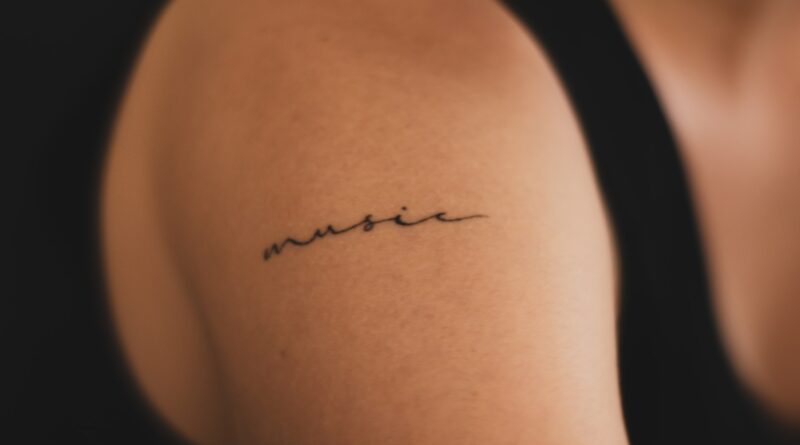Tattoo and Information
Tattoo and Information
Maja Krtalić, Jennifer Campbell-Meier, Spencer Lilley
For many people, tattoos are a powerful and beautiful way to adorn the body and express identity, memory, ideas or artistic preferences. For some, tattoos are symbols of trauma and regret. Whether tattoos simply decorate the body or carry a deeper meaning, information is created, captured and communicated through tattoo images and during the tattooing process. Researchers at Victoria University of Wellington in New Zealand have been exploring the informational aspect of tattoos in a project called Tattoo and Information. We interviewed 25 New Zealanders of diverse profiles. Here is what we know so far.
Tattoo images carry information
A tattoo is a medium and a message. Tattoo carries information about and to oneself. People embed information about themselves in their tattoos, either through creating specific designs or adding meaning to the existing images they find. Every time they look at their tattoos, they re-interpret that information in a different light. Their tattoos also communicate information to others in various daily life and work contexts, and as such, tattoos convey information that others interpret.
—A tattoo is a medium and a message—
Information in tattoos has a function
People decide to have tattoos for various reasons, and looking at those reasons through the lens of information, we can see that information in a tattoo has a function. Information in a tattoo helps people to display identity and show belonging to a community, honour (memory of and experience of) people, places and events, deal with emotions (such as grief, loss or rebellion), and decorate body (aesthetics and body autonomy).
Intricacies of tattoo images and their visual appeal can be used to express the complexity of our identity(ies) and our multiple belongings to families, communities, religious groups, national cultures, and subcultures based on interests or beliefs. These expressions can range from using explicit visual elements that will be easily recognised by others to using generic or abstract elements whose meaning is implicit and added by the tattoo wearer. In some case, tattoos are a sign of recognition and explicit declaration of belonging to a community, for example, elements of LGBTQ+ or culture that shows belonging to immigrant communities.
 In indigenous cultures, tattoos capture information about one’s genealogy, past and future and are a sign of not just belonging to a community but also a sign of achievements in life, respect and position in a social structure.
In indigenous cultures, tattoos capture information about one’s genealogy, past and future and are a sign of not just belonging to a community but also a sign of achievements in life, respect and position in a social structure.
Tattoos are used as a means to honour people, places and events and to capture one’s memory and experience. Often, it is a means to deal with emotions, such as grief and loss, anger or rebellion against existing (family or wider) norms. Achievements in life are celebrated by getting a tattoo, which then serves as a reminder of those accomplishments and the effort it took to achieve them.
Even in cases when the choice of tattoo is purely decorative, initiated by aesthetical desires or no reason at all, tattoos can say something about peoples’ preferences and likings but also express their body autonomy.
People experience information through tattoo images and the tattoo acquisition process
What does it mean to experience information? In the context of tattoos, people experience information when they look for or create a tattoo design—through hours of online browsing for inspiration, or a more focused search for specific topics or designs, through looking at physical display windows of tattoo studios or observing people on the street, through using sources of information to draw their own design, from books, newspapers, photographs or artefacts in their homes.
People experience information when finding and communicating with tattoo artists.The process of finding a new artist or a decision to return to the one whose services were previously used is often determined by factors such as style, reputation, availability, and costs, but also an inner intuitive feeling of trust and safety in what is often a vulnerable position. People experience information while being inked and afterwards, daily, wearing a tattoo in diverse work and life settings.
Information skills and literacies support tattoo experience
For a “successful” tattoo experience, it is good to know and understand:
- How to search for image inspiration (information literacy).
- To whom the image belongs to (intellectual property).
- That images found online should not be copied (legal literacy), and images created by an artist can be protected by copyright.
- How to talk to tattoo artists and how to build trust (communication skills).
- What to think about when documenting and sharing your tattoo image online (digital literacy, media literacy).
- How to find information about pain and aftercare (health information literacy).
- Not all tattoos are positive; how to find information about and manage removal and regret.
- Tattoos express belonging to a culture and society and not all tattoo images are appropriate for everyone or in every context (cultural and societal literacy).
Would you like to read more about these findings?
1) Campbell-Meier, J. and Krtalić, M. 2022. “Tattoo information creation: Towards a holistic understanding of tattoo information experience”. Library & Information Science Research, 44, 3, https://doi.org/10.1016/j.lisr.2022.101161
2) Krtalić, M., Campbell-Meier, J., Day, A. and Lilley, S. 2023. “Literacies in everyday life: Tattoo information needs”. Education for Information, 39, 3, pp. 287-307. DOI: 10.3233/EFI-230046
Cite this article in APA as: Krtalić, M., Campbell-Meier, J., & Lilley, S. Tattoo and information. (2023, October 4). Information Matters, Vol. 3, Issue 10. https://informationmatters.org/2023/10/tattoo-and-information/
Authors
-

Maja Krtalić is an Associate Professor in the School of Information Management. Victoria University of Wellington, New Zealand. She teaches courses on records management, digital curation and information access and use. Her research is in information behaviour, personal information management, and cultural heritage preservation.
View all posts -
Spencer is an Associate Professor in the Information Studies programmes in the School of Information Management at Te Herenga Waka Victoria University of Wellington in New Zealand. He has genealogical affiliations to Māori (Te Atiawa, Muaūpoko and Ngāpuhi), Samoa and the United Kingdom. Prior to commencing his academic and research career, he worked as a library professional for 23 years in special and academic libraries.
View all posts






